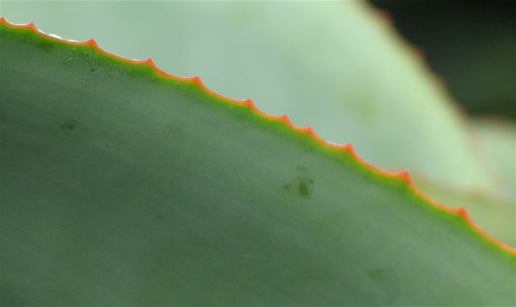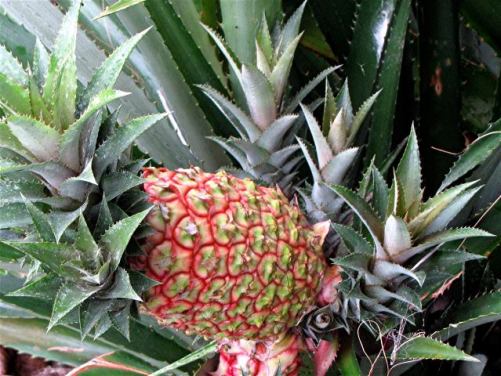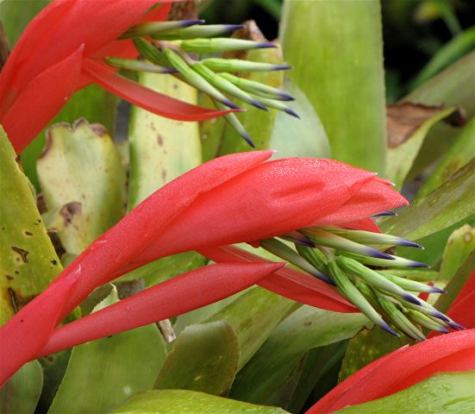Since I haven’t posted photos from my own garden for a while, I thought I might catch you up on some of the orchids I’ve had in bloom – many of them for the first time. Some of the spikes stay in bud for months so it’s an exciting moment when the flowers finally open.
My Laelia gouldiana was set aside for me at last year’s Tauranga Orchid Show – Elizabeth thought it was the sort of thing I could grow successfully and it turns out she may have been right. The orchid is native to the mountains of Hildaldo, Mexico which means that it doesn’t mind cooler temperatures. Remember, my orchids are either in the house (just the moth orchids, really) or outside (all the rest) so there’s no fancy-pants heating or cooling for them, they get what the days and nights are dishing out. The only proviso is that they’re under a verandah in winter so I can control the watering and in bright shade in summer.
The gouldiana flowers opened on a long stem that nonetheless stayed upright. The plant is named for Laelia, one of the Vestal Virgins, and Jay Gould, a 19th century American financier and orchid enthusiast.

Cymbidium Pure Love Peppermint. Photo: Sandra Simpson
This one’s a cheat because I bought it in flower – the test will be whether I can get it to repeat as well next year. In mid-June I went to the auction of a commercial operation that was closing down and got this plant, so big that The Vege Grower could barely lift it, and its sister. They’d been in a shade house but although they immediately went into what is a fairly open garden in the winter (deciduous trees) and have been rained on a great deal, there appear to be no complaints. Truly striking plants with multiple flower stems.
The grower’s prosaic name for this line was PLP (green). The auctioneer said he hadn’t sold plant lines before – we ended up getting these gorgeous plants for $2 each!

Dendrobium Kuniko. Photo: Sandra Simpson
A much smaller plant is this Dendrobium Kuniko that flowers all along bare canes (the leaves drop off in the second year ready for flowering). There were a few flowers on it when I bought it last September but when it came into bloom in May it had numerous flowers and on June 30 was still going strong with new buds opening. There were two on the display table at the last meeting of the Tauranga Orchid Society and it was interesting to see how different the flower colour can be – from blue-ish through to vibrant purple (mine is more in the lavender range). The parents are from Taiwan and the Philippines.

Restrepia striata. Photo: Sandra Simpson
This little cutey was bought in flower at the Te Puke Orchid Show in April – no sooner had I paid for it than some bright spark told me it was nick-named the cockroach orchid! The flowers don’t last all that long (a couple of weeks) but it has just come into flower again, so if it keeps that up I won’t complain.
This orchid is native to wet mountain areas in west and north South America. Read more about its care here. The genus name, Restrepia, is for José E. Restrepo, a Colombian explorer of the Andes.









